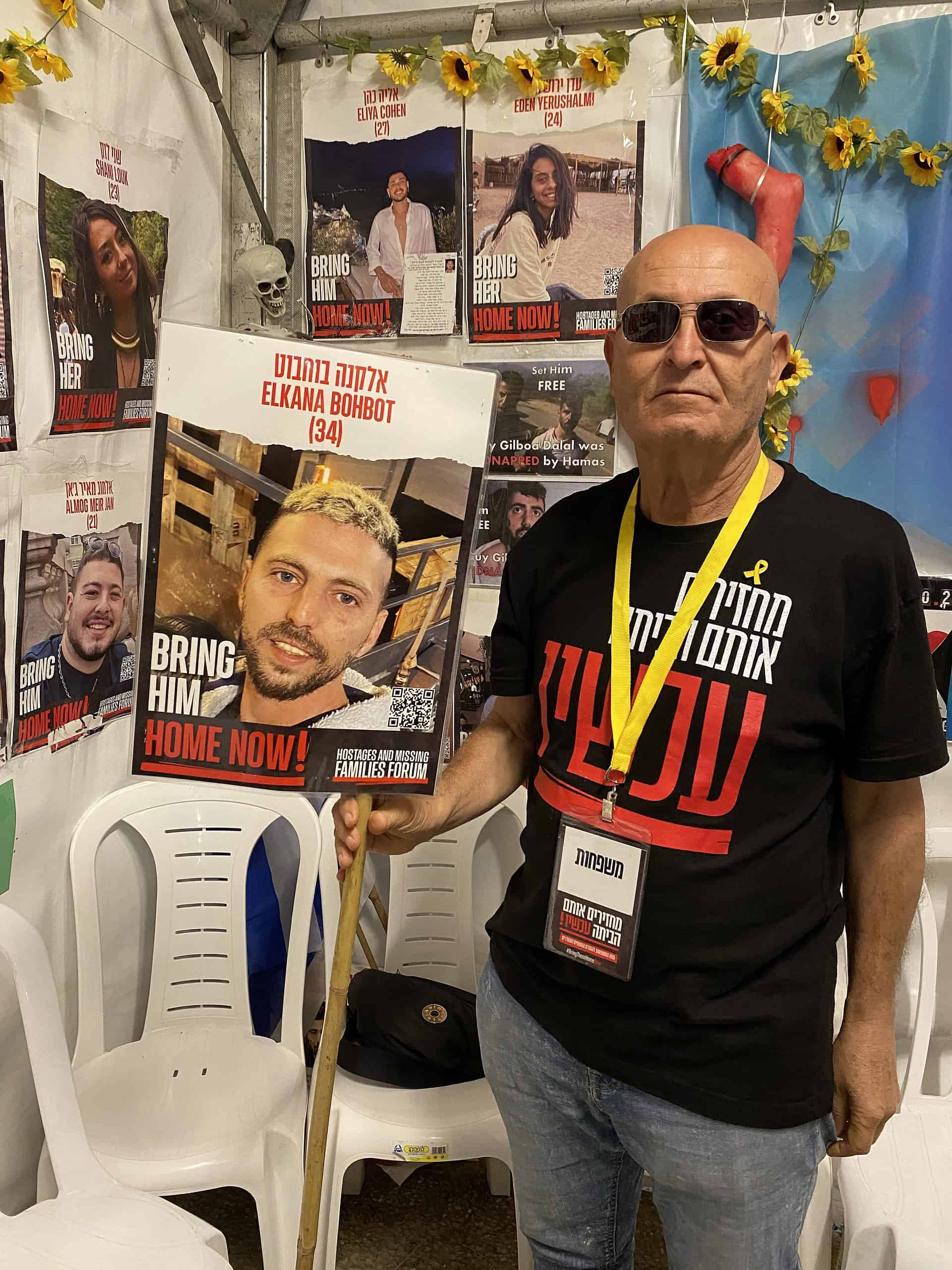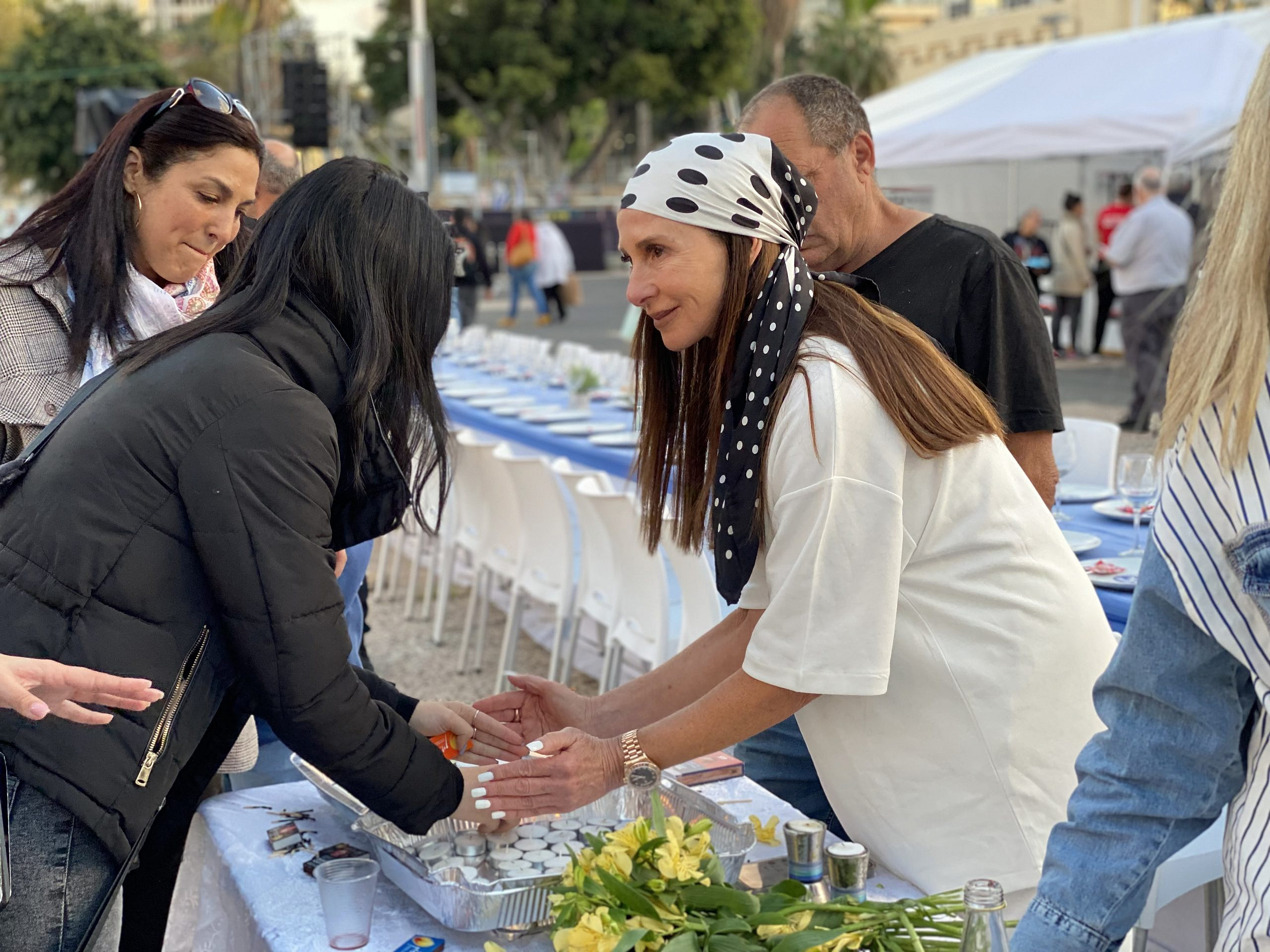On a recent Friday evening in Tel Aviv, the air turned chilly as the sun sank below the horizon. Small groups coalesced to pray and usher in Shabbat at the open plaza outside of the Tel Aviv Museum of Art that has come to be called “Hostages Square.”
Israel was grappling with internal divisions before the Hamas terrorist attacks in its southern communities on Oct. 7, though the country has set aside many of those differences for the time being in the wake of the worst attack on Jews since the Holocaust and the ensuing war in the Gaza Strip. That’s been evident in the membership of the war cabinet, which reaches across the aisle, and it is immediately clear in Hostages Square, as believers and non-believers alike have turned to prayer.
Lea Schenirer invites women to gather around Shabbat tea lights she set up in aluminum pans. On Instagram, the Pilates instructor and social-media influencer (with 112,000 followers) poses in revealing spandex and low-cut evening gowns. But in Hostages Square, she covers her hair with a silk scarf. Palms together, Schenirer closes her eyes and points her chin towards the heavens as she leads a group of women in the traditional blessing over the candles.
The women welcome Shabbat as they recite each word slowly and deliberately. When they finish, Schenirer calls out in spontaneous prayer. “God! God! I ask a favor of You,” she begins. “Please, please hear our pleas and return them home now. Their families are hurting. Their hearts are broken.”
‘You aren’t answering us’
German tourists gather nearby for a different sort of prayer in one of many tents set up in the plaza. In one, identified with a ragged “Nova” music sign—named for the 364 young festival-goers slaughtered by terrorists in an open field that Shabbat and Simchat Torah morning—splattered with red paint, simulating blood, Menashe Harush holds court to talk about his nephew, Elkana Bohbot.
Bohbot, 34, was last seen in a video on Oct. 7, in which he was crumpled on a floor with his face bloodied and eyes wide with fear. Clad in a black “Bring them home now” T-shirt, Harush speaks via an English translator as he displays a photo of Bohbot. He has been living and sleeping in the square since Oct. 8 to raise awareness about his nephew’s plight. Some 50 family members of hostages have done the same.

The tent is adorned with a mixture of both festive and gruesome ornamentation: bloody body parts made of stuffed fabric hanging on the walls, a disco ball, posters of the hostages and yellow flowers. Ofer Avni, 70, drops by as he typically does on a Friday evening to raise Harush’s spirits. The peace activist recites a poem he has written.
“Hi, God,” he begins, waving upwards as if to capture Divine attention. “I hope you are still alive because you aren’t answering us even in these terrible times.” The German tourists listen to the verse via a translator as the Tel Aviv resident—an avowed atheist—informs God that “our situation here is really terrible: thousands of dead, kidnapped and displaced.”
He asks for three favors: “Return the hostages immediately, protect our soldiers from harm, and”—what he calls “the most difficult of all”—remove Israeli Prime Minister Benjamin Netanyahu from power.
‘Look around you’
Mere feet away, a more traditional Friday-night Kabbalat Shabbat service unfolds. Anat Sharbat, who holds ordination from Yeshivat Maharat, a progressive institution that identifies as open Orthodox, and Leor Sinai, a Conservative rabbi who used to lead the Alexander Muss High School in Israel in Hod Hasharon, set up some 20 plastic chairs in makeshift rows and distributed prayer books to those who joined them.
A few have arrived intending to participate in the services, while some passersby hover tentatively. The latter sit, stand, sing, weep or watch at the edges before drifting away.
Sharbat, who has organized this prayer service weekly since Oct. 7, faced a religious dilemma at the first such gathering on Oct. 13. Hundreds showed up for the beginning of the Kabbalat Shabbat service with its well-known liturgy and participatory tunes. As the service, which can run about 30 minutes, unfolded, interest waned and participants peeled off.

By the time the group reached the beginning of the Maariv prayer, which, according to Orthodox Judaism, requires a minyan of 10 men, not enough male worshippers remained.
“I didn’t know what to do,” Sharbat told JNS.
To make matters trickier, prominent rabbis Daniel Sperber and Rabbi Avi Weiss, Sharbat’s mentors and those who ordained her, were present that first Friday evening.
For a few difficult moments, she floundered, unsure how to navigate her responsibility to religious tradition and to the non-Orthodox people gathered there who were prepared to pray.
Sperber advised her to “look around you,” Sharbat told JNS. Only a few of the white chairs that she and Sinai had set up were occupied. But the rabbi pointed to the many others wandering around the plaza, all focused on and concerned about the fate of Israeli citizens who had been abducted.
There was a minyan present in the square, even if not in the plastic chairs, Sperber ruled. So the service continued that day and Sharbat has used the same reasoning every Friday evening since, she told JNS.
At the conclusion of the the service JNS attended, a woman offered a hopeful vision that the hostages would be freed, so that next Friday, the worshippers could gather to celebrate, rather than ache.


























